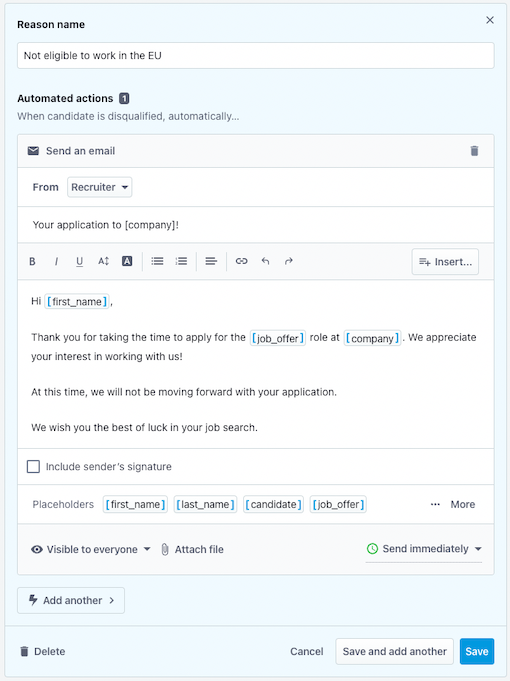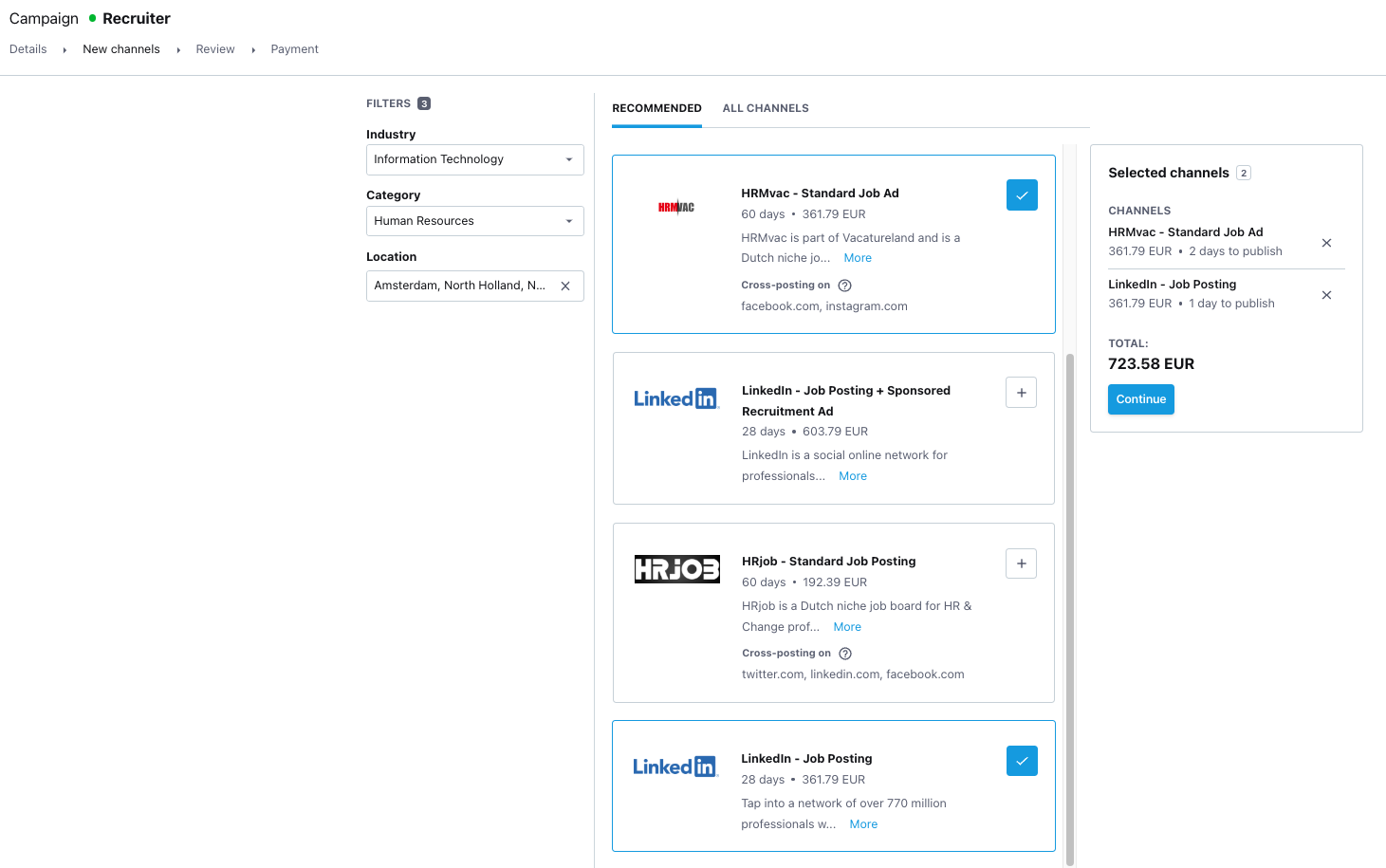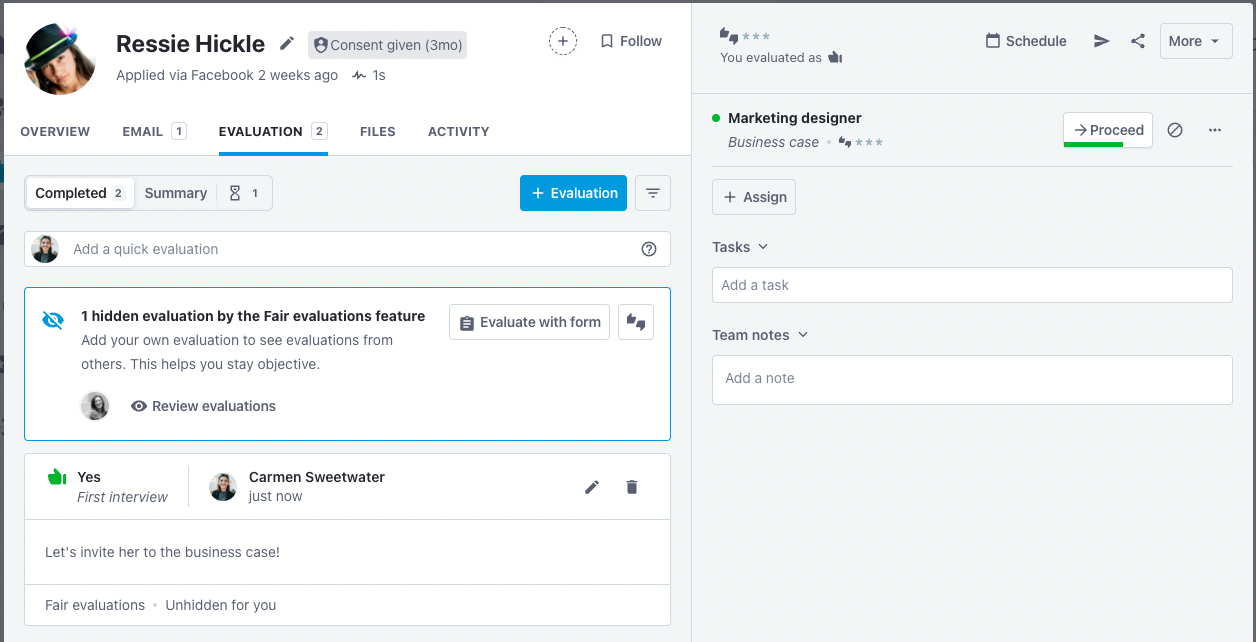You’re working hard building a positive corporate culture and perfecting your employer brand. All of your recruitment ducks appear to be in a row, but when you open your ATS, you’re still not finding the right candidates for your open positions. Does that sound familiar? Then you’re far from alone.
Hiring is no piece of cake these days. The labor market is still hotly contested, and the economic environment makes it difficult for companies to plan long term. Top talent is scarce, especially for highly in-demand skills, and that doesn’t appear to be changing any time soon.
To thrive in this environment, recruitment teams need to become more convincing and efficient in how they attract top talent. In this article, we’ll examine reasons why applicant quality might be less than ideal, and some strategies you can use to reverse that trend.
How bad applicants affect business
Ineffective job advertisements have a cascading negative impact on your team, and teams across your organization. It can hurt your business long term by making it hard to fill positions, negatively impacting morale and productivity, and harming your company’s reputation as an employer.
This impacts your:
- Teams. Morale, sentiment, and productivity can all take a hit.
- Efficiency. There's a high level of churn and repetition in the recruitment process.
- Results. A lack of productivity and motivation amongst your team reduces success.
- Reputation. Applicants may share negative experiences about your company.
The good news is that you don’t have to remain a victim to poor applicants. By auditing your recruitment efforts, and being more strategic with how you attract and screen candidates, you can reverse this trend.
7 reasons your applicants aren’t good enough
Before we look at ways to find the right talent, let’s first look at some reasons why your applicants might not be up to the expected standard.
1. Your recruitment strategy is too general (or maybe non-existent)
Adapt your requirements and processes not only to the specific job opening, but also to your industry and the specific requirements of your company. If you search too generally and don't address the target group directly enough, it will take longer to find good candidates.
2. Your application process is cumbersome and time-consuming
.jpg?width=120&height=120&name=66a8bc11eb3d2698ba813b84_kimberly-headshot%20(1).jpg)
K.I.S.S. is the motto: Keep it short and simple. For example, have you ever considered omitting the cover letter? Or have you tried to apply via your company's CareersHub? Are there questions or steps that seem too complicated or lengthy? Consider shortening these or removing them altogether.
3. You’re not using the right recruiting channels
Traditional job platforms such as Indeed and LinkedIn are still two of the most popular recruiting channels, followed closely by the companies' own career pages.

4. Your job descriptions are too general
Being too general with your job ads is a great way to to be inundated with a high volume of unqualified candidates. Instead, be super specific about what it requires for this role, and what type of person you want.
What skills and competencies are basic requirements for this position? What experience can help? What attributes does the candidate need to be a good fit with the company? What does the company and team want from this candidate? Be specific and descriptive in your job ads to answer as much about the role as possible for applicants.
5. You’re not filtering and evaluating your applications efficiently
Applicant screening should be as efficient and accurate as possible throughout the hiring process. Automate basic screening tasks early in the process to weed out applicants who do not meet minimum requirements like visa eligibility and language requirements. Manual screening may be necessary, but it’s best to send applications through a round or two of automated shortlisting first to make this step less burdensome.
6. Your employer branding is not convincing
Top talent is rich with choices in today’s job market. They’re looking to join companies with the best reputations and offers. Glassdoor found that 95% of applicants take a company’s reputation into account when deciding for or against a job.
If you’re not communicating your company’s values and culture clearly, and you’re not curating your employer brand online, then chances are you’re not putting your best foot forward to top candidates.
Tip:
7. The career paths in your company are opaque

In fact, most applicants would like to know what development opportunities exist at your company—both professionally and personally—before applying for a job. Be specific and transparent about these opportunities in your job ads. Share opportunities for leadership development and continuing education, if they exist.
7 steps to attracting better candidates
Once you’ve identified the biggest hurdles to attracting quality candidates, you can start to improve your strategies and processes. Here are eight steps that will help.
1. Get the hiring manager onboard
As a first step, schedule an intake meeting with the hiring manager and other stakeholders. This will give you a change to clarify with the hiring team:
- The requirements that must be met for the new position
- What future co-workers would like from their new teammate
- What expectations the department has for the new hire
- What tasks will need to be fulfilled
During this meeting, it’s also best to discuss the logistics of the hiring process, including availability, a general timeframe for each stage of the hiring process, compensation range, and the team’s capacity to provide feedback to the recruitment team.
The earlier this process stars—and the clearer the communication between recruiters and hiring managers—the better collaboration within the recruitment team will be.
Want to learn more about how to get your hiring managers to be more involved in the collaborative hiring process?
2. Create a candidate profile
Next, work with your hiring team to create a well-defined candidate persona. This will be used to create job requirements and expectations for the role, which then help to inform recruitment and used to attract applicants.
This candidate profile should not only contain the professional requirements for the job, but also the character traits and soft skills you’re looking for in a candidate. The candidate profile is about the ideal person as a whole, in other words—not just a list of experience or skills requirements.
Once you have this candidate profile, you can use it to strategize ways of advertising to people who share these attributes, and as a basis for screening applicants.
3. Write a clear and appealing job ad
When writing your recruitment ad, be sure to use clear and understandable language that’s written to appeal to your candidate profile. Get creative. A job description doesn’t always have to follow the same structure and tone. Don’t be afraid to add personality, humor, and a bit of storytelling into your ad.

If you use Recruitee by Tellent and you're feeling stuck, give our AI-powered job description writing tool a go to help you get this process started. While this tool offers a solid starting point, remember to carefully review and adapt the content to ensure clarity, specificity, and alignment with company values and specific job requirements.
4. Outline screening questions to ask
Consider—preferably with your collaborative hiring team—which questions you’d like to ask during the screening process. You likely have some standardized questions you ask all candidates. What else might you want to know about applicants early in the process to help you determine if they’re the right fit?
You might also consider what are called “knockout questions” as part of the application. For example, you could ask “Are you eligible to work in the United States?” If this is a requirement for the job, your ATS could then weed out any applicants who answered “No” to that question.
This process ensures that you’re asking relevant questions of your applicants, and that you’re using the early screening process to weed out candidates who simply don’t meet the minimum requirements.
With Recruitee, you can not only define screening questions and knockout questions in advance, but also assign actions to them. For example, you can send automatic rejections to applicants without a work permit or automatically add an internal task for the responsible colleague for all English-speaking applicants.


5. Tailor your hiring for each role
For each new hiring cycle, consider which strategies and tactics are most likely to lead to your desired goal and ideal candidates. Consider what’s worked in the past, and what hasn’t.
Is it enough to post a job ad and wait for applications to come in? Or should you opt for more active sourcing? Is it worth taking a look at your talent pool to see if there are passive candidates that might fit the bill? The answers to these questions may change depending on the role in questions, and the ideal candidate persona.
The channels, likewise, will also change. Some recruitment efforts may be successful using traditional job boards and social channels. Others, meanwhile, might require the use of more niche channels like industry career networks.
The hiring team is your best resource to determine your strategy for each role. Chances are, the hiring manager and their team will have a pretty good idea of where the ideal candidate persona spends their time on the internet. Use their insights about their industry and area of expertise to help craft your outreach strategy.
With Recruitee, you can create a job promotion campaign to attract candidates on premium and niche job boards and our tool will recommend the best suited channels based on your needs.

6. Ask the right questions during the collaborative evaluation stage
Selecting suitable applicants involves more than shortlisting CVs based on their experience and skills. People come with intangibles that may make them a great candidate, even if their resume is slightly less impressive than another applicant’s.
To measure and capture these intangibles, we recommend recording these impressions as part of your collaborative evaluation process. For the sake of objectivity, we recommend working with standardized forms that each member of your team can fill out for each candidate. This not only makes the process fairer, but also ensures evaluations aren’t too burdensome on your team.

If you're using Recruitee, you can set up and customize evaluation forms and scorecards and easily share that with the hiring team so that you can find the best candidates together based on the same criteria. Recruitee also supports you in evaluating candidates as part of a structured and fair selection process.

7. Continually improve your employer brand
Lastly, make sure to never lose sight of your employer brand. This is the ace in your sleeve when labor markets become tight, and top talent is hard to get.
Continuously evaluate and adapt your employer brand messaging as market dynamics shift, and applicant expectations change. Don’t stray from your core ideals, but do make sure that you’re adapting your messaging and offerings to what the market expects. Keep a close eye on your talent competitors, and other data signals that may point to new trends in candidate expectations.
Conclusion: start improving the quality of your candidates
A shortage of skilled workers, a battle for top talent, and generational and skills gaps in the market. It seems like there’s a litany of obstacles to quality hiring today, which don’t appear to be going away any time soon.
To thrive in this environment, recruitment teams need to optimize and automate their recruitment process, and ensure they have clearly defined hiring strategies that ramp up to the company’s goals.
Applicant management systems like Recruitee can help. Our tools help recruiters streamline their processes, facilitate better collaborative hiring, write better job descriptions, and ultimately find and attract the right—and best—talent for their companies.

Tellent Recruitee Newsletter
Sign up for our newsletter and get practical hiring advice, fresh recruiting ideas, and product updates you’ll actually want to read.




.jpg?width=1000&name=66dad3ce4563f15eb4e2e2b2_white-details-of-puzzle-on-yellow-background-busi-2022-01-12-22-29-05-utc%20(1).jpg)


